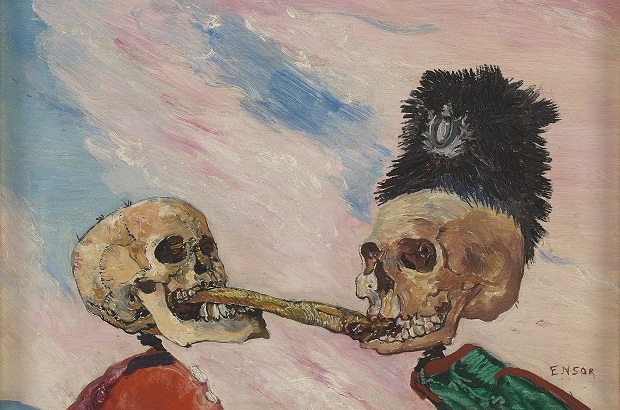- Daily & Weekly newsletters
- Buy & download The Bulletin
- Comment on our articles
James Ensor: How Brussels inspired the Ostend artist’s quirky and satirical work
The art of James Ensor is always intriguing. The Belgian painter and printmaker was a singular artist with an unmistakeable oeuvre of discordant scenes filled with colourful masks and skeletons.
While occupying a key role in Belgium’s vibrant avant-garde at the end of the 20th century, categorisation of his style can be elusive. Symbolism, surrealism and expressionism were all movements he explored, although satirical caricature was probably the defining characteristic.
Throughout 2024, exhibitions are celebrating different aspects of the Ostend artist’s life work in honour of the 75th anniversary of his death.
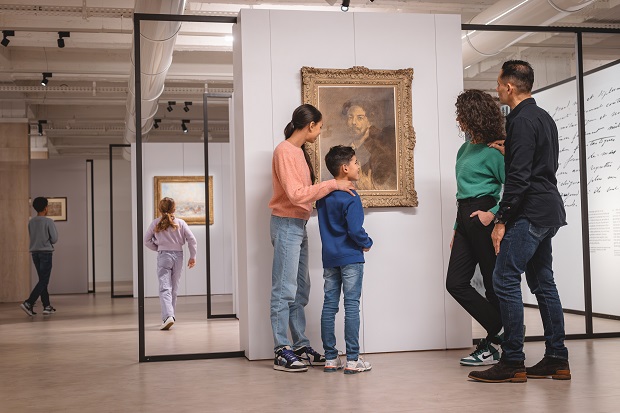
While Ensor rarely travelled, he spent formative years in the Belgian capital as an art student; maintaining links with the city throughout his life. It’s this lesser-known influence that forms the central theme of the exhibition James Ensor. Inspired by Brussels, showing at the national library KBR until 2 June.
From the library’s collection and those of the Royal Museum of Fine Arts, 75 works on display explore the role the Belgian capital played in the development of his quirky visual language.
Ensor was born in Ostend in 1860 to a father of British origin and a mother whose family ran souvenir shops along the coast. Their stock of masks, curios, shells, carnival costumes and chinoiseries served as props for his paintings and drawing.
After a short period at Ostend’s art academy, at the age of 17 he enrolled at the prestigious royal academy of fine arts in Brussels. It marked the debut of a stimulating period in Ensor’s life.
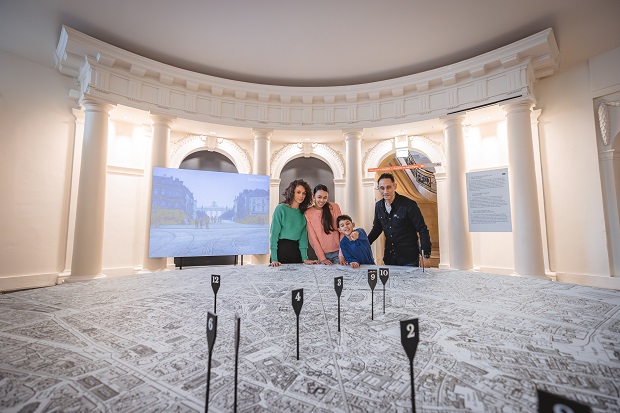
After an initial section devoted to his family and a confident self-portrait, the exhibition moves into the museum’s splendid rotonda. It houses a large table transformed into a map of the capital marked with all the places Ensor frequented.
The exhibits continue upstairs via the grand staircase that is a vestige of the 18th-century Palace of Charles of Lorraine integrated within the Mont des Arts library.
Ensor’s time at the academy proved to be less glorious than his fellow students, who included Fernand Khnopff and Théo van Rysselberghe. They had to recreate drawings and statues from classical antiquity. In annual painting competitions, he frequently came last.
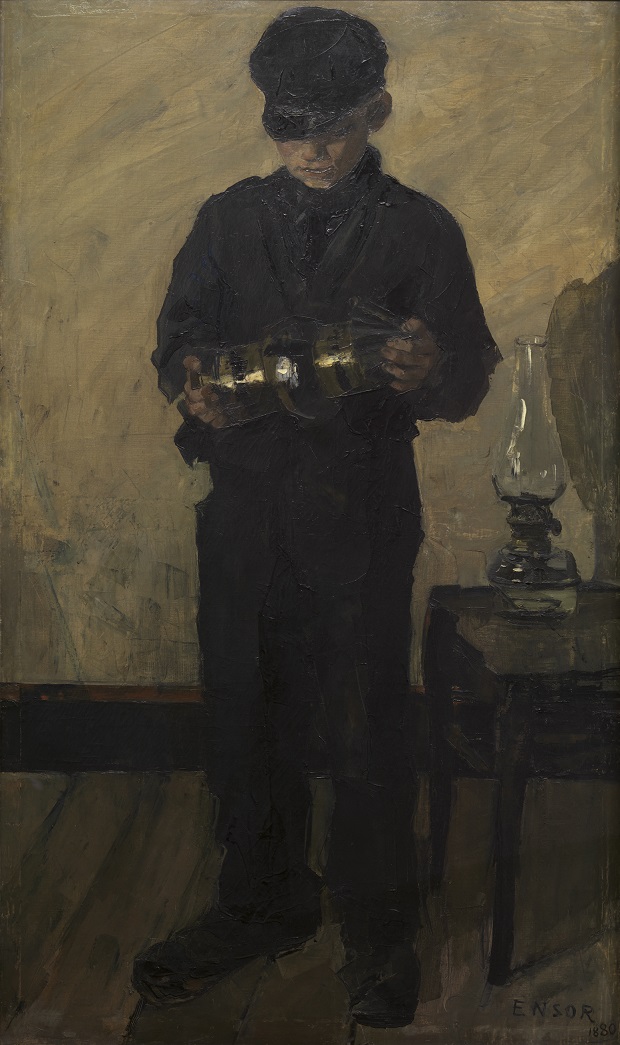
After three years, Ensor turned his back on the academy; too old-fashioned and rigid for his liking. A significant work completed soon after was The Lamplighter ((pictured), a large oil of a young working boy inspired by the Realism style then in vogue.
In 1883, a group of artists, including Ensor, founded Les XX in a rebellion against the prevailing artistic tastes. They launched an annual salon of radical work that pursued its own rules, independent of any of official institutes of the day, which lasted 10 years.
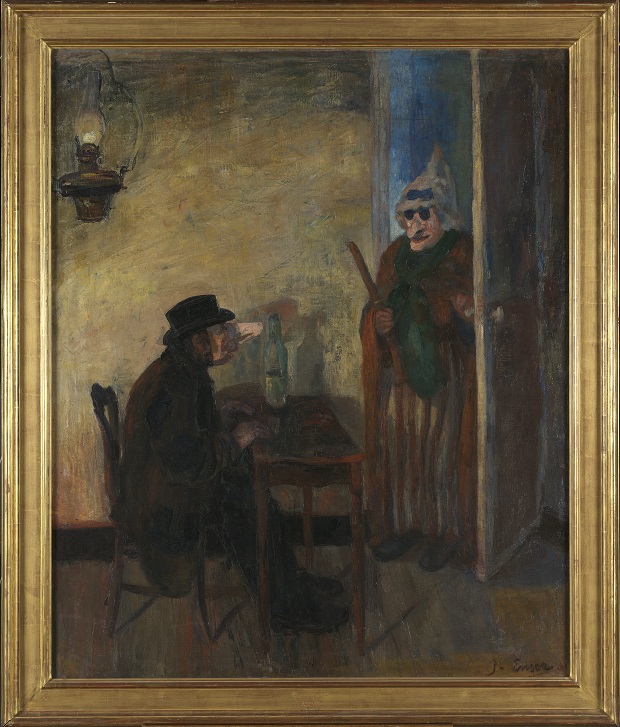
Ensor presented his most controversial works in the salon, including his first sensational mask scene The Scandalised Masks (pictured). The painting possibly references his alcoholic father, the introduction of the masks darkening its atmosphere. The more grotesque the work, the more criticism he attracted. King Leopold II and the ruling classes’ politics would also be mocked by the artist.
From 1887, these salons took place in the Palace of Charles of Lorraine, which then housed the museum of modern art. The exhibition continues in the luxuriously-furnished period palace rooms where the left-leaning artists once hung their work.
Dedicated to different periods of Ensor’s early work, one illuminating room highlights his relationship with fellow avant-garde artist Théo Hannon, his sister Mariette and her husband physics professor Ernest Rousseau. The latter’s home in Ixelles became an important meeting place for numerous scientific and artistic intellectuals; the Rousseau family also served as patrons for Ensor’s art.
Letters, archives and drawings are also testament to Ensor’s affection for Mariette in particular. He considered his relationship with the young woman one of the most important in his life. She collected all of his drawings in an album. Now worn and fragile, the museum has launched a crowdfunding campaign to restore it.
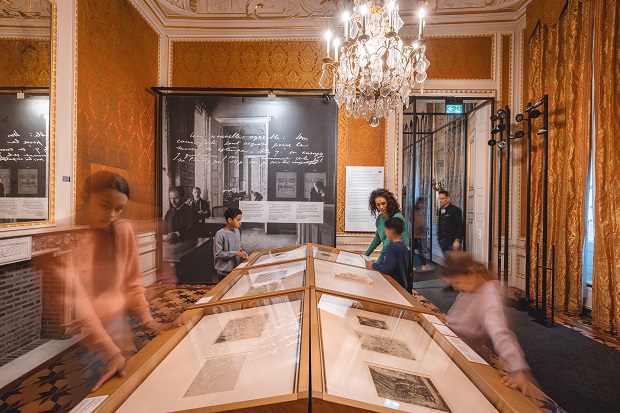
While a succession of exquisite paintings attest to Ensor’s impressive portraiture skills, another room is filled with prints from the museum’s extensive collection. Ensor was an admirer of Rembrandt and visited the museum’s former print room to see up close works by the master.
The final section of the exhibition is devoted to scenes of Brussels, further reinforcing the theme about its influence on his work. Notable is the large canvas of Christ’s Entry into Brussels depicting citizens’ protests.
This collaboration between the library and the Museum of Fine Arts focuses on Ensor’s dark earlier period. The Strange Masks and Skeletons Fighting over a Pickled Herring (pictured, main image), is an example of his move to a more expressive period. The use of masks draws on Belgium’s carnival traditions and the overthrowing of society conventions, both class and gender.
For the duration of the exhibition, a series of events and activities area hosted by the library, including guided tours and workshops.
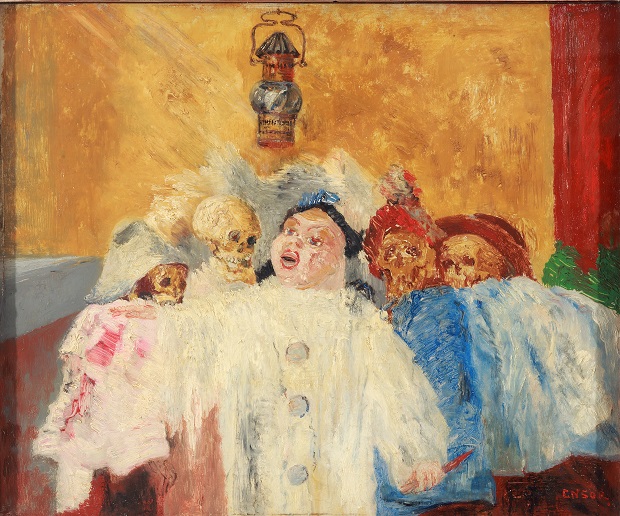
Meanwhile the anniversary celebrations continue at Bozar with James Ensor. Maestro. It honours his multifaceted creativity, showcasing some 150 paintings, prints, photos, documents, scores and film clips. The 1905 painting Pierrot and Skeletons (pictured) features typically dark signature motifs while the intense colour and pearlescent white elevate the image.
Beyond his biting caricatural and sarcastic paintings and drawings, Ensor’s talent extended to writing texts and composing music, particularly in the latter years of his life. It’s this often overlooked aspect of his work that is highlighted in the show.
In his hometown of Ostend, an exhibition is devoted to still life renditions, Rose, rose, rose à mes yeux! at Mu.Zee ntil 14 April. The coastal city presents James Ensor: Self Portraits at the James Ensorhuis from 21 March to 16 June, and the city of Antwerp stages the exhibition James Ensor in bird’s-eye view at KMSKA from September. More information about Ensor2024 events here.
Photos - paintings: (main image) ©James Ensor, Squelettes se disputant un hareng fume MRBAB J. Geleyns - Art Photography; James Ensor, Le Lampiste, MRBAB Photo d'art Speltdoorn Fils; James Ensor, Les masques scandalise MRBAB J. Geleyns - Art Photography; James Ensor Pierrot et squelettes KBC Bank NV, Brussels












